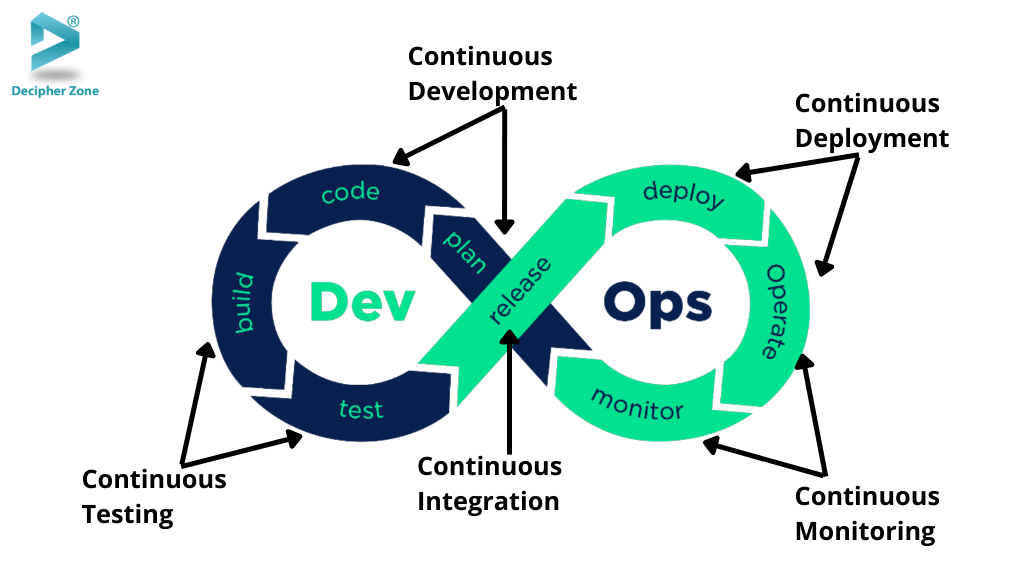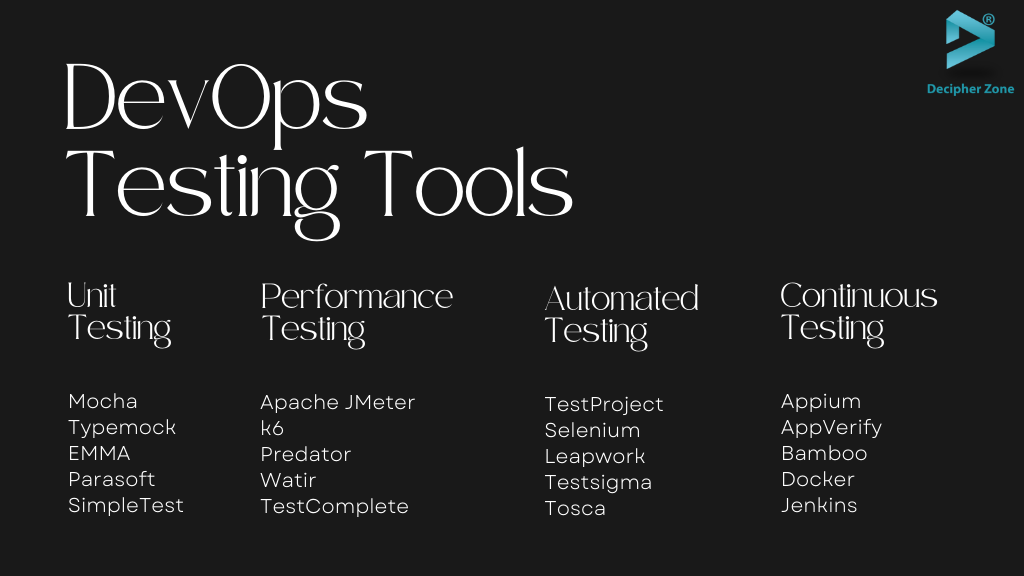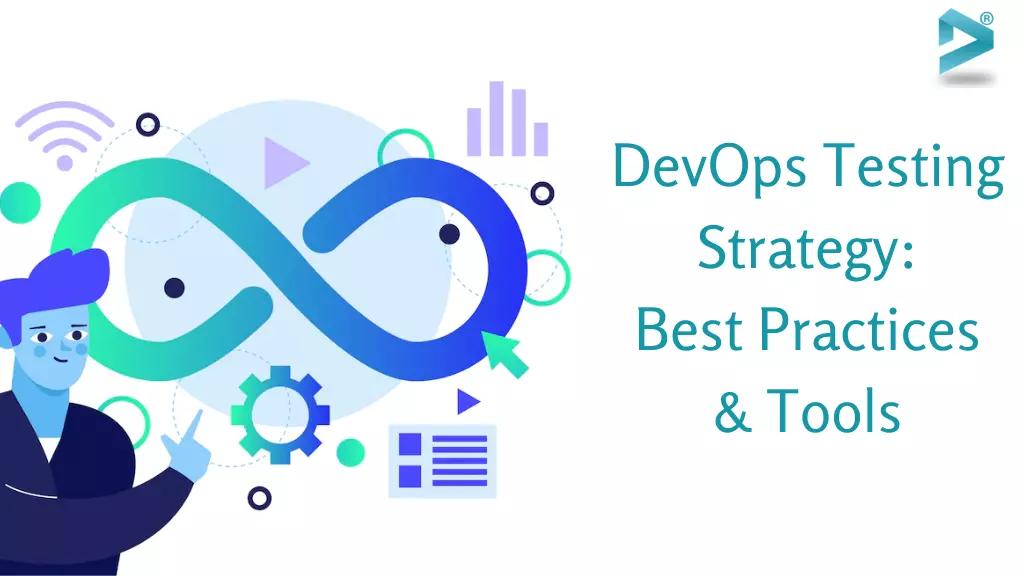What are the Best Practices & Tools for DevOps Testing Strategy? Software development companies have been adopting DevOps since it helps automate and streamline their application development life cycle. Not just that, but, DevOps also improves the quality and speed of the project deliveries by making the coordination between development and operations teams better through planning, communication, processes and tools.
Since the evolution of DevOps, businesses are either using Agile+DevOps or just opting for DevOps methodologies.
(Agile is an iterative process focused on collabs, feedback and rapid releases.)
But what’s the best strategy for testing DevOps? To help you out, we will discuss the basic concept of DevOps, its lifecycle, best practices and tools that you should go for.
What is DevOps?
DevOps is the set of tools, cultural philosophies, and practices that improves the ability of an organization to deliver projects at high velocity by automating and integrating processes between development and operation teams. DevOps accentuates cross-team collaboration & communication, team empowerment, and automation.
Under a DevOps methodology, the development team and operations team are not isolated from each other. These two teams are often merged as one team where developers work on the app’s lifecycle from development to deployment and operations. Besides, the DevOps team has a wide range of skills that isn’t limited to one function or feature of the application.
Read: What does DevOps actually do
Sometimes, the security and quality assurance teams get integrated with DevOps throughout the application development. In this case, where the focus of the DevOps team is on the security of the application, it is also referred to as DevSecOps.
Unlike traditional manual practices, the DevOps team uses a technology stack and tooling that automates the process to build applications reliably and quickly. In addition, DevOps tools allow developers to carry out tasks such as provisioning infrastructure or deploying code independently, which would have otherwise required assistance from other teams.
DevOps Lifecycle
DevOps lifecycle is an automated processes series within a continuous development lifecycle. DevOps lifecycle works on an iterative approach that’s the reason practitioners have symbolized it as an infinity loop. This infinity loop represents the continuous and collaborative strategy that includes technology stacks and tools for every stage in the lifecycle of an application.
The left part of the lifecycle deals with the application development and testing while the right side depicts the cycle of deployment and operations.

Let’s get an overview of the working DevOps lifecycle.
-
Plans: The DevOps team identifies business needs and gathers feedback from users during the planning phase. To maximize the value to the business and provide the desired result, developers also create a roadmap of the project at this stage.
-
Code: In this stage, the application code is created and the process is streamlined by using tools and plugins like Git or GitHub to minimize lousy coding practices and shortcomings in application security.
-
Build: In the build stage, developers commit the code to the shared repository with tools like Gradle or Maven.
-
Test: In the test phase, the build is deployed to the test environment so that the application quality can be ensured by running different tests such as security, user acceptance, integration, performance, and more using tools like Selenium, JUnit, etc.
-
Release: When the build is ready to be deployed in the production environment after passing tests, releases are scheduled by the operations team.
-
Deploy: In the deployment stage, Infrastructure-as-Code uses different tools to build and deploy the production environment.
-
Operate: Once the release is accessible to the end-users, the operations team works on server configuring and provisioning using tools like Ansible, Saltstack, CFEngine, or Chef.
-
Monitor: As the name suggests, in the monitoring stage, the DevOps pipeline is monitored according to the collected information on application performance, user behavior, and so forth. With environment monitoring, teams can easily identify bottlenecks that affect productivity.
From Agile to DevOps
Even with subtle differences between DevOps and Agile testing, individuals working with Agile might find DevOps more familiar and eventually adopt it. Although the principles of Agile are successfully applied in the iterations of development and QA, it is not as successful on the operations side. This is where DevOps comes in.
DevOps has now replaced Continuous Integration with Continuous Development, in which teams work to develop applications in short cycles so the software can be automatically and reliably released anytime. Using CD, the software application can be developed, tested, and released at a great frequency.
As processes and environments are standardized in DevOps, the continuous development process benefits everyone in the entire chain. As all the processes in DevOps are automated, it allows developers to focus on designing and coding a high-quality application instead of stressing about builds, quality assurance, and operations processes.
Read: Salesforce DevOps benefits and challenges
Using continuous development dramatically reduces the duration between the time code is written and committed to deployment on production for users up to 4 hours.
In short, DevOps is an Agile extension or can be called "Agile on Steroids."
Best Practices For DevOps Testing
DevOps test engineers need to re-think software QA test strategies to align with pipeline stages from development to operations. Thankfully, several DevOps testing best practices can be understood and used for any application development. Although it is beyond the scope of this article to explain each of the test best practices of DevOps. That’s why we have summarized every best practice of DevOps testing and explained them below.
1. DevOps Test Culture
The testing culture of DevOps differs as the responsibility of providing high-quality applications is shared between cross-functional team members. The quality check is a crucial aspect of the pipeline phases and involves all the team members. Besides, quality testing cannot be left for the end of the pipeline by a completely different team. So, teams need to determine the test strategies to control the extent and volume of testing activities throughout the application development lifecycle.
Read: Running Stateful Applications on Kubernetes - Best Practices & Use Cases
To achieve the required results, each member of the cross-functional team has to take the responsibility for testing and its results.
DevOps Test Culture should include the following characteristics:
-
Encouragement of collaboration around testing and test results analysis instead of confrontations between testers and developers for code repairs.
-
Test coverage and creation terms have been consented to by the DevOps team.
-
Leaders should consider testing as a strategic part of the project development instead of seeing it as a cost that can be reduced. They need to budget money and time to provide test training resources, frameworks, tools, management and creating assessment policies for developers they want in the DevOps team.
-
Dev teams should embrace the test creation and result analysis, while the Ops teams should plan and execute cross-functional tests.
2. Continuous Test Strategies
The traditional waterfall approach for testing where an extensive volume of changes in the application is tested near the end of the development cycle by an independent QA team cannot work with DevOps.
As the DevOps team tests small changes over all the stages of the continuous delivery pipeline, agile methodologies are more compatible with DevOps testing.
Read: What is Custom Software Development
While Agile emphasizes the importance of continuous testing and the need to integrate continuous testing into software tools, it does not define the methods for extending tests to deployment. The continuous testing strategies required for DevOps are more defined than those for waterfall or Agile. Continuous testing strategies must include the integration of testing in all the phases of the pipeline and deployment.
3. End-to-End Test Integration
DevOps requires horizontal integration of tests across end-to-end pipeline stages as well as vertical integration across different levels of continuous delivery infrastructure.
The best practices to achieve end-to-end test integration are enlisted below:
-
Conducting tests on the changes in the application before integration using a private instance to ensure the code changes do not break the branch. Some of the testing methods to do so are static code analysis, unit testing, performance testing, regression, scanning and functional testing.
-
In the pre-integration testing stage, automated tests should be created for use in later testing stages in the pipeline.
-
To verify test results from the pre-integration test, the DevOps team should conduct assessments on the code at the time of committing code.
-
In the build stage, tests should be performed to identify whether the integrated build meets the acceptance criteria.
-
To make sure that the performance and functionality of the build images meet the assessment criteria, performance and functional tests must be committed during the code testing process.
-
Similarly, at other stages such as regression, system tests, and delivery, a set of tests needs to be conducted to ensure that the code and application meet the expected assessment criteria.
4. DevOps Test Infrastructures
The application that is being tested can have either monolithic, 3-tier, service-oriented or microservices architecture. DevOps testing practices emphasize the importance of conducting tests in a production-like environment which assures that the test can cover all the configurations of the application once deployed to production.
For that, a best practice is to find and include infrastructure-as-code, dynamic infrastructure configuration tools, cloud services, and test-as-a-service that are more cost-efficient and feasible than dedicated infrastructures and easily stand up and release infrastructure configurations as required to run tests.
5. DevOps-Ready Test Tools
The continuous delivery test tools must offer capabilities to operate tests on the applications and provide data from the results required to set the test verdict. Some of the tools you can use are functional test tools, protocol test tools, API test tools, unit test tools, database simulators, performance/load test tools, and user interface test tools.
Test tools may be white box tools, gray box tools and black box tools. Test tools should be able to blend the test toolchain and framework to be DevOps-ready.
This will increase the elasticity of scale on-demand vertically or horizontally, and match the workload demands as well as the capacity of testing changes in application going through the continuous delivery pipeline. DevOps ready tools can be orchestrated, scaled, invoked, controlled, and monitored from an API. Resources, employing fail-fast test design techniques, test framework configurations that accelerate test results monitoring, and test tool configurations.
6. Test Analytics
If the analysis of the results from continuous testing does not get kept up with the speed of testing, it can not only increase the number of results to be analyzed but also lead to no time savings, mass confusion and overlooked valuable results that will slow the CI/CT cycles. Some techniques that can be used to match the speed of the test and its analysis include test result analysers, dashboards or adding analysis tools to the frameworks.
7. Microservices and Containers
From the testing perspective, with microservices architecture comes the need to verify each service contract with other services using it. Both inter-service dependencies and the independence of microservices should be well tested.
It is also necessary to verify the reliability and performance considerations when operating services over a network. Microservices need to be regression tested if they were affected by application changes or a dependent microservices group.
Containers provide the possibility of packaging test resources in special containers for convenience and immutability, as well as scalability on demand for testing changes.
8. Database DevOps Testing
It is crucial to have a strategy to test and verify any changes to the database or application using a database are performing as required throughout the pipeline of continuous delivery. Additionally, there must be tools that can be used to replicate data volumes from the production to ensure that the tests are conducted on the production like datasets before deployment.
9. DevOps Security Testing
By strategizing DevOps Security testing, it becomes easier to make the application free from vulnerabilities, threats and risks. DevOps team can apply automated tools and tests in the development cycle to minimize downtime, vulnerabilities and security threats.
10. Automate Tests
To eliminate the risks that come with continuous integration, it is essential to add test automation that will provide quick application quality feedback. Indulging automation testing with CI allows teams to test iterations of new code and minimize the possibility of errors.
DevOps Testing Tools
What are the best tools for DevOps Testing Strategy? Here is the list of different testing tools that can be used for the DevOps testing strategy.

Using DevOps testing tools in the software development life cycle offers several advantages to the development and operations team. Some of the benefits it offers are code quality improvement, fast and continuous feedback, and increased application time-to-market that helps in increasing development, operations and testing teams.
Unit Testing Tools
With unit testing, the DevOps team can examine the source code of the application individually to verify its functionality. Unit testing can be done even at the initial development stage of the application. It relies on test cases that imitate the functionality of the application. These test cases either pass or fail and provide results to the user so that they can debug the code.
Some unit testing tools are specifically designed for a given programming language. A few tools you can use are Mocha (for JavaScript), EMMA (for Java), Typemock (for .Net and C++), Parasoft (for C and C++), and SimpleTest (for PHP).
Performance Testing Tools
Performance testing is done at the later stages of DevOps, i.e when the code is written and integrated. According to the requirements of the project, performance testing tools will subject the application to stress, load, capacity, volume and recovery tests to check the performance of the application and how it recovers from an outrage.
The aim of using tools for performance testing is to detect the crash source and modify the system for peak efficiency before releasing it to end-users. A few tools that can be used for performance testing are Apache JMeter, k6, Watir, Predator, and TestComplete.
Automated Testing Tools
Automated testing tools help to run tests automatically, manage test data and use the result to improve the quality of the software. Apart from reducing human errors, automated testing tools also enable scaled evaluations. Automated tools in the CI/CD model trigger tests based on events.
Some of the tools that the DevOps team can use for automated testing are TestProject, Leapwork, Selenium, Tosca, and Testsigma.
Continuous Testing Tools
Continuous testing is the process of testing applications that helps in code, feature and application validation at every phase of the DevOps pipeline to detect bugs and minimize the turnaround time.
A few examples of continuous testing tools that are used by the DevOps team include AppVerify, Appium, Docker, Bamboo, and Jenkins.
Conclusion
DevOps is the ideal solution for the development of applications for several businesses because of all the right reasons. However, the success and quality of the application completely depend on the strategy the DevOps team made for testing the application.
We hope that this article has helped you out in strategizing DevOps testing for your current or future projects.
Besides, if you are a business owner who wants to develop a web application or need an on-demand solution for their business, you can hire developers who are well versed and experienced in the same by simply getting in touch with us!

